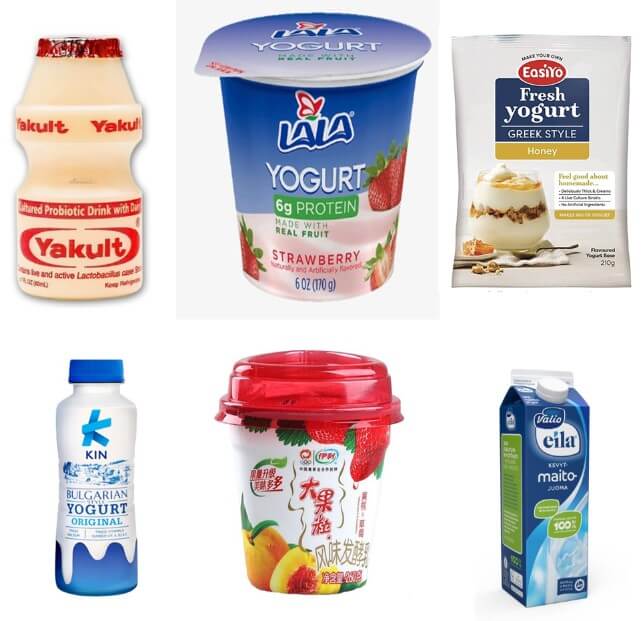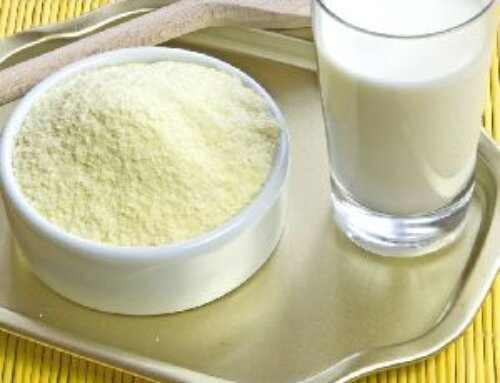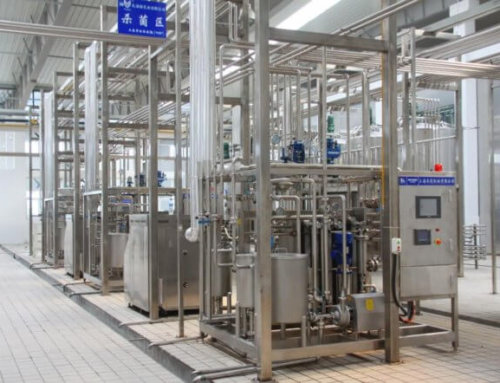Project Description
Yogurt Processing Line
Yogurt Processing Line Description
- Yogurt also called fermented milk or sour milk, it decomposes lactose and protein in milk, making it easier for the human body to digest and absorb. Drinking yogurt can promote gastric juice secretion, increase appetite, and enhance immunity.
- Yogurt uses raw milk or milk powder as raw materials, with or without adding ingredients, after sterilizing and fermenting, make them into is acid curd-like products. During the shelf life, the end product has corresponding active probiotics.
- The main strains of lactic acid starters are Streptococcus thermophilus and Lactobacillus bulgaricus.
- The commercial yogurt production process involves raw milk receiving and standardizing, pasteurizing and homogenizing milk, adding live bacteria cultures, incubating the mixture at a specific temperature to allow fermentation, cooling and adding flavors or sweeteners, and packaging the final product in containers of various sizes for distribution.
- The ingredients for yogurt processing are fruit materials, sugar or sweetener, and stabilizers(pectin, gelatin, starch, agar, etc.).
- The capacity of the yogurt processing line is 1T/D—500T/D for customers to choose from. The technological process and configuration of the production line have a high degree of flexibility and customization to meet the different requirements of clients.
- The yogurt production line mainly includes raw milk pretreatment system (using raw milk as raw material) or milk powder blending system (using milk powder as raw material), yogurt sterilization system, yogurt fermentation system, yogurt filling and packaging system, CIP cleaning system, RO water system.
- The entire yogurt production line is made of SUS304 or 316L material, which meets the hygiene requirements of food production.
- Yogurt filling, storage, transportation and sales distribution all apply to cold chain technology to keep fresh and good shelf life.
- The yogurt production process typically involves several stages, including milk reception, pasteurization, cooling, inoculation with bacterial cultures (Lactobacillus bulgaricus and Streptococcus thermophilus), fermentation at a specific temperature and time, the addition of flavors and sweeteners, filling into containers, and incubation to achieve desired texture and flavor, using specialized equipment and technologies to produce a nutritious and flavorful yogurt product.
Yogurt Processing Line Classification
According to the finished product status:
—Set yogurt: Set yogurt is fermented after filling into the packaging container, and the finished product is curd-like.
—Stirred yogurt: Stirred yogurt is a fluid product with a certain viscosity made by stirring the fermented curd before filling it into the container, with or without adding fruit materials.
—Drinking Yogurt: Similar to stirred yogurt, the curd is decomposed into liquid type before filling and packing.
According to the flavor of the finished product:
—Natural pure yogurt: a product made from fresh milk or milk powder, skimmed or non-skimmed, after fermentation. The yogurt does not contain any auxiliary materials and additives. The shelf life of this product can be stored for 15-18 days at a temperature of 2-6°C.
– Flavored yogurt: yogurt made by adding sugar, natural fruit materials, vitamins, etc. to raw milk or milk powder, and then fermented by probiotics. The shelf life is about 25 days with cold storage conditions. The amount of fruit added is about 15%, of which the sugar content is 50%.
According to storage conditions:
-Chilled yogurt: Fresh milk after pasteurization and fermentation, the end products will be filled into cups, cartons, or bottles. The filling, distribution and storage processes are all in a chilled environment.
-Room temperature aseptic yogurt: Fresh milk after sterilization and fermentation to obtain the yogurt, then the yogurt will feed into a sterilizer for the UHT treatment to make into aseptic yogurt, and the aseptic yogurt will be filled into aseptic cartons, bottles or cups aseptically.

Yogurt Processing Line Technological Flowchart
Set Yogurt: Raw milk or milk powder after acceptance, ingredients adding, standardization, homogenization and pasteurization, then starter inoculation and filling into containers. Finally the liquid in containers will be fermented into set yogurt in the fermentation room, then the fermented yogurt is stored in a refrigerator at 2-6°C for 12-24 hours for producing of aromatic substances and improving the viscosity of the product.

Stirred Yogurt: Raw milk or milk powder after acceptance, ingredients adding, standardization, homogenization, pasteurization and cooling, then inoculating starter to start fermentation. After fermentation, the yogurt will be stirred and cooled down to 10℃ and then filled into containers like small cups, bottles or pouches. At last, the end package will be stored in the refrigerator.

Key Machine Of Yogurt Processing Line
Raw milk acceptance and storage system
The raw milk acceptance and storage unit includes a weighing tank, a raw milk receiving tank, a double filter, a plate cooler, raw milk insulation storage tanks, a milk pump and other equipment. The raw materials used in the production of yogurt need to be fresh, high-quality, acidity not higher than 18°T, and milk solids not lower than 11.2%. The raw milk is weighed, filtered, cooled to about 4°C, and stored in a SUS304 insulation tank.

Raw milk standardization machine
The content of casein and whey protein in raw milk can increase the hardness of yogurt and reduce the precipitation of whey. In order to increase the dry matter content, skimmed milk powder or condensed milk can be added and mixed with water to make reconstituted milk as a raw material for yogurt. The mixing tank can be equipped with stirring, high and low liquid level indicator, temperature sensor, CIP cleaning nozzle, sampling port, PH meter, etc.

Yogurt degassing homogenization and pasteurization unit
Converting lactose into yogurt has a protective effect on milk. The low pH of fermented milk inhibits the growth of bacteria and other microorganisms and prolongs the shelf life of the end products. On the other hand, yogurt provides good growth conditions for yeast and mold. Microbial contamination can cause bad flavor of the product. Heat treatment can destroy any microorganisms present in the raw milk, giving the product a stable shelf life.
The lower the air content in the milk used for fermented dairy products, the better. However, if milk powder is added to increase the solids content of non-fat milk, some air is unavoidable, so it should be degassed after adding milk powder. In addition, the degassing of yogurt can also improve the viscosity and stability of yogurt, and remove volatile odors.
The milk will be preheated to about 65°C for homogenization, which helps to improve the stability and consistency of the yogurt, and makes the yogurt fine in texture and good taste. The homogenization pressure of yogurt is 20-25MPA.
The homogenized milk is pasteurized at 90-95℃holding for 5 minutes, then cooled to about 43℃, and then pumped into the fermentation tank for fermentation. This pasteurization process can denature most of the whey protein and make milk combine with water, thereby improving the consistency of yogurt. The yogurt pasteurizer adopts a four-stage plate pasteurizer, which is divided into a preheating section, temperature holding section, tower water cooling section and a heat recovery section. The yogurt pasteurizer has the feature of high efficiency and heat recovery rate.

Yogurt inoculation fermentation unit
The pasteurized milk needs to be inoculated immediately with the mixed starter of Bulgarian bacteria and Streptococcus thermophilus. The general inoculation amount is 2%-4%. The starter should be stirred evenly before inoculation.
The fermentation of stirred yogurt is carried out in a fermenting tank, and the fermenter provides heat through the heat medium in the tank jacket to maintain the fermentation temperature. A temperature sensor and a PH meter are installed in the fermentation tank, which can measure the temperature and PH value of the yogurt in the tank. Incubate at 41-43°C for 2-3 hours, the pH value can be reduced to about 4.7. In addition, stirring type yogurt generally needs to add 0.1%-0.5% gelatin, pectin and other stabilizers, the fruit pieces, vitamins can also be added to increase the flavor of yogurt.
The fermentation of set yogurt is completed in the fermentation chamber. The temperature of the fermentation chamber is maintained at about 43°C. The milk after filled into the container, then incubated for 2-3 hours under the action of the starter, and then they can be cooled and stored. During the fermentation process in the fermentation chamber, the fermentation temperature should be constant to avoid fluctuating high and low.

Yogurt cooling and flavoring unit
In the final stage of cultivation, when the required acidity has been reached (pH 4.2~4.5), the yogurt must be cooled to 15-22°C quickly, which can temporarily prevent the further increase of acidity. Cooling takes place in a plate heat exchanger, which guarantees that the product is not subject to strong mechanical disturbances. In order to ensure uniform product quality, the capacity of the pump and cooler should be able to empty the fermenter within 20-30min.
After cooling to 15-22°C, the yogurt is ready for packaging. Fruits and flavors can be added while the yogurt is being transported from the storage tank to the packaging machine. This is done by continuously pumping these ingredients into the yogurt with a variable-speed metering pump and mixing them through a mixing device, which is designed to be static and hygienic and to ensure that the fruit is thoroughly mixed with the yogurt. The fruit material metering pump and the yogurt feeding pump operate synchronously. In the pretreatment of the fruit material addition, the fruit material with solid particles or the fruit pulp needs to be fully pasteurized.
Yogurt filling unit
The packaging forms of yogurt mainly include porcelain bottles, glass bottles, plastic cups, plastic bags, composite paper boxes, plastic buckets, etc. The most popular packaging form for set yogurt is a glass bottle, which can be filled with gravity filling machine; most of the stirred yogurt is packaged in a plastic cups, because the fermented yogurt has a certain viscosity, so it can use piston filling machine. The yogurt filling room needs to be a thousand- or one-hundred-level clean room, and for the stirred yogurt, the filling temperature is 4-6℃ for cold filling; For the set yogurt, the filling temperature will be 40℃, after filling, the containers will be sent to fermentation room for fermenting.
Because the flavor of yogurt takes 12-24 hours to complete, it is necessary to store the yogurt in a refrigerator for 24 hours after the filling and fermentation process is completed. Finally, it is transported by refrigerated truck to the point of sale for refrigerated sales.


